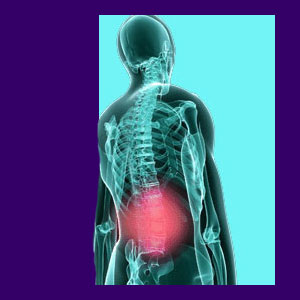
Delayed onset back pain is a common problem for patients who have injured their backs or perceived injury to their backs. There is much speculation about delayed onset pain, in general, since this occurrence can be caused by purely structural issues, purely psychosomatic and conditioning sources or a combination of the both mental and physical contributors.
Delayed onset pain is most often associated with litigation after a personal injury in which the patient begins to have pain right about the time their mind gets around to considering the idea of filing a civil lawsuit to receive financial compensation.
This article defines and explains the controversial topic of delayed onset back pain.
What is Delayed Onset Back Pain?
Delayed onset pain means symptoms which do not begin immediately, but come on at some point after the initial injury or perceived injury. In some cases, pain may begin a few hours later, while in other cases the pain may be further delayed by days or even weeks.
The longer the onset of pain takes, the less the chances of the symptoms being purely anatomically-based, although this is not an absolute. There are many possible explanations for delayed onset pain and sometimes none can be definitely proven to be the absolute cause in a great number of cases.
Physical Reasons for Delayed Back Pain
Here are some of the many possible anatomical reasons why pain may not come on right away, but does indeed start after hours or days:
Adrenaline can pour into the body after a back injury or a perceived back injury, acting as a natural pain blocker. This accounts for cases in which pain is delayed for several hours, but certainly not for days or weeks.
Soft tissue injuries may become much worse within the first 24 to 48 hours, particularly if the area stiffens and goes into spasm. These types of pains usually do not involve any lasting damage and will usually resolve within a week or so.
Some injuries are partial and further movement or activity may compete the injury cycle, enacting back pain symptoms at some point in the future.
Inflammation injuries may take time to develop as the area begins to retain fluids and lose proper circulation. This can explain pain which worsens in the first 24 to 48 hours.
Psychosomatic Delayed Onset Back Pain
In my own experience, many cases of delayed onset pains are psychologically motivated. Once again, there are many possible reasons to explain psychosomatic delayed onset pain, including:
Primary Delayed Back Pain
There is an existing psychosomatic symptom imperative in place or the patient already is suffering from some form of psychosomatic pain which moves to the affected area as a reverse version of back pain substitute symptoms. The patient suffers a back pain conditioning syndrome in which case they expect pain to begin at any time and it does not disappoint them. The patient is warned of the possibility for delayed onset pain and therefore develops it purely as a nocebo response.
Secondary Delayed Back Pain
Secondary gain back pain may cause symptoms to begin out of a hidden desire to be cared for or to avoid responsibilities, such as work or family. Secondary pain usually occurs when the patient realizes that they could probably make some money from their incident if they were actually hurt. In the days to follow pains begin, then intensify causing the patient to commence a back injury lawsuit, which then perpetuates the symptoms (often indefinitely). This is all subconsciously motivated in most cases, not purposeful deceit.





